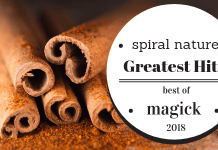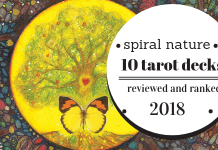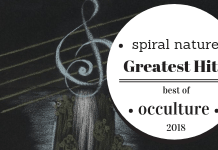
Of the 13 articles on spirituality we published in 2018, these are the 9 most popular on Spiral Nature Magazine.
Click on the title link to take you to the full article to revisit articles you’ve forgotten, meant to read, or maybe haven’t seen yet if you’re new to the site. (Welcome!)
We’ve had a fantastic year, and it’s all thanks to you — our readers and supporters.
If you want to really help us in the new year, consider becoming a member of the Occultnik Cabal — our premium membership program. Your membership helps pay writer’s fees and with it, we can publish even more awesome content. Thank you for your support!
Happy holidays!
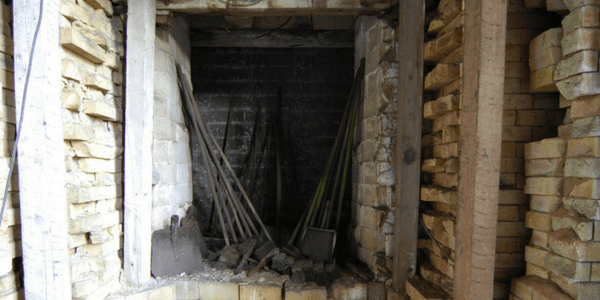
9. Exiting the broom closet: Sharing your magick with friends and family
By Donyae Coles
Being open with your practice to friends and family isn’t everyone’s goal, but for some people, trying to hide is just too much, and they want to be open to the world, or at least to their loved ones. However, this isn’t always so easy to do.
Here are some tips and tricks for gradually introducing and explaining your practice to those who are closest to you, so you can begin to step out of the broom closet. Although these won’t work for everyone in every situation, use these suggestions as a place to start as you move towards sharing your practice with others.
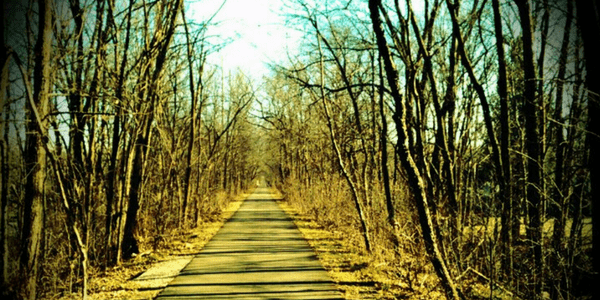
8. Natural magick: Remembering our connection to the world
By Chrysanthemum White Alder
As the cycles turn and the seasons advance, our need for connection deepens. Our magick may be borne of our dreams, but more often than not, it is most powerfully activated in the material world around us. It is the world that plays the stage to our dreams, ambitions, and goals, and is indistinguishable from the concept of nature. It is our connection to nature that tethers us to the real, not nature in some romantic, pastoral ideal, but the lively, messy, and sometimes ugly systems of mutuality we play an integral role within.
How can we strengthen and deepen our connection to nature outside the cliched notion of “getting away from it all?” Is nature the sole domain of forest, jungle, or ocean, or does it also encompass the sometimes alienating environments of city and suburbia?
I contend that establishing a true and lasting connection to nature begins exactly where you are. Our bodies and our homes are ecosystems unto themselves. The micro reflects the macro, and so we may begin the flirtation with Mother Nature by looking inwards.
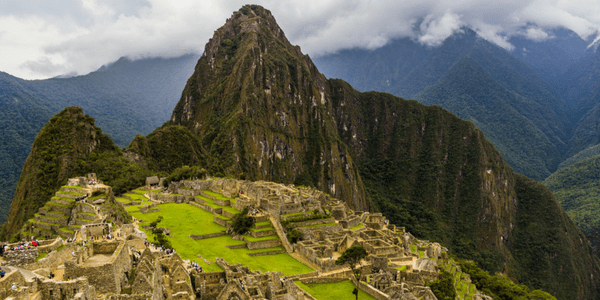
7. Pilgrimage: Travel as a magical practice
By Lori Lytle
I chose to mark a significant birthday (that need not be named) by a long dreamed of trip to Peru. I marked the actual date with a visit to Machu Picchu, and an early morning climb up Huayna Picchu, the sacred mountain that rises above the site.
This involved getting up at around 3:30 am, waiting in line for the first bus of the day in the cold mountain air and pitch darkness, followed by a bumpy, winding ride on a crowded bus up to the site. Upon arrival, I sprinted to the tourist office to get one of the coveted and limited tickets for the day, and then naively undertook a climb that petrified me, tested my claustrophobia, and made me realize how out of shape I am.
It was awesome. I was so proud of myself. I felt my power. If I had known how scary that experience would be, I never would have embarked on it. This is often the way with pilgrimage. It is better to start with the vision and a rough itinerary and trust that the details will take care of themselves, rather than planning the mystery (or talking yourself) out of it.
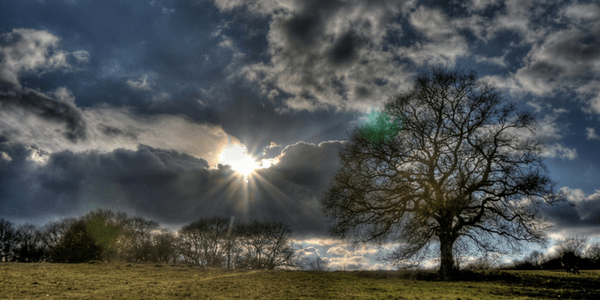
6. Pagan heritage: Connecting to your roots and finding common ground
By Emma Kathryn
My spiritual practice is something that has changed, evolved, and grown over the years, and I’m sure it will continue to do so. After all, our paths are just that: paths, and all paths lead somewhere. My Pagan heritage wasn’t something I suddenly discovered, fully formed.
Along the way, we each find things that might interest us, sometimes to the point of obsession and sometimes momentarily. There is so much knowledge out there, and sometimes incorporating the bits and pieces we pick up along the way can be something of a struggle. There are so many issues within the Pagan and witchcraft sphere, so much so, that sometimes, quite often in fact, we leave out practices and belief systems because we just don’t know how to or are afraid to incorporate them into our practices.
I know firsthand just how difficult this can be, and so here I will share those thoughts, feelings and insights that were particularly helpful to myself.
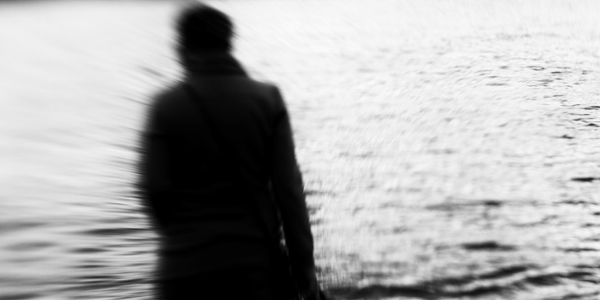
5. Dancing with the Shadow: An introduction to shadow work
By Dallas Jennifer Cobb
For many years I have been doing shadow work, dipping into my own darkness in order to reveal what is found there and bring it into the light. A recovering addict with 28 plus years clean, I have danced with my dark shadow physically, mentally, emotionally, and spiritually. Recovery is a long, on-going process, one that draws on many supports, tools and helpers.
The more I learned, the more I understood the need to know my shadow. I wanted to understand what made me an addict, and how I can be more conscious of these parts of myself, so that I am less susceptible to slipping back into addiction in the future.

4. Deepen your connection to the land throughout the Wheel of the Year
By Emma Kathryn
The summer solstice has just passed, or the winter solstice, for those in the southern hemisphere. Like so many others, and perhaps even like you yourself, I have marvelled at how fast this year seems to be speeding by. New Year and Imbolc seem far away and at the same time, as though they happened yesterday. Time takes on a weird, almost dreamlike quality, and it seems almost impossible that we are already half way through the year.
The Wheel of the Year is ever turning and sometimes, or rather, quite often, it is easy to miss or take for granted the fact that time is passing. In this way, perhaps we miss some of the magick as well. We put so much effort, time, and planning into the sabbats and the celebrations that go with them, and then we pack it all away after the day and carry on carrying on until the next. Of course, we all lead incredibly busy lives — school, work, family pressures, chores, and all of that, so it’s no surprise that we may not have the time or energy to take stock everyday.
However, if we can try weekly or perhaps even daily celebrations, we can add so much more to our own personal witchcraft and Pagan practices and, as you will see, these needn’t take too much time, but they will require effort.
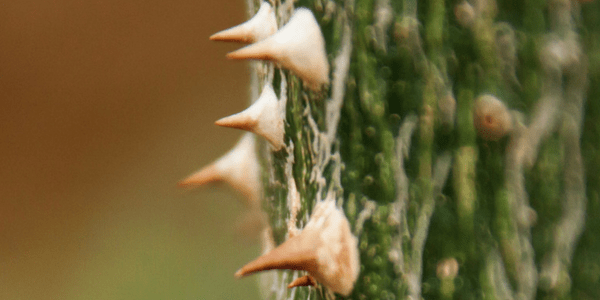
3. Understanding Lilith: From first human to first monster
By Gavin Fox
There is a stigma associated with seeking out and approaching Lilith. Puritanical voices in the magical community often suggest that working with her is unbecoming.
It’s true that the Internet is full of articles explaining how to obtain sexual favours from the children of this dark goddess, the incubi and succubi, and that gaining an imaginary playmate is as far as most magicians will choose to go.
However, in doing so, they miss the fact that Lilith’s burning sexuality is but a means to an end, and one that hints at a deeper current of self determination through pleasure.
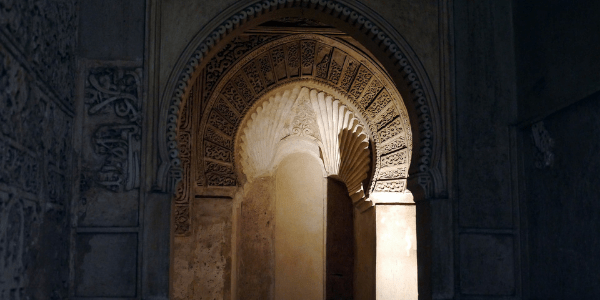
2. How an Arab witch honours and contacts his ancestors
By Bader Saab
I highly respect my ancestors, both my Beloved Dead and my Mighty Dead.1 I don’t usually call their names and ask for their help, but I always try to know who they were, how they lived, what I can learn from them, and always respect their memory.
However, many of my Beloved Dead would not even recognize me as one of their descendants because of their prejudices and their archaic thoughts. Even today, there are people in my family that would stop talking to me if they knew I was a witch, and they too will become my ancestors in time.

1. Satanic art: A devotional practice
By Marie RavenSoul
People have always expressed their devotion to their gods through art. As archaeologists continue to find new artifacts all over the world, it is evident that ancient civilizations from the Babylonians to the Egyptians were very religious. Their drawings, sculptures, lamps, documents, and carvings have taught us about their beliefs and how they lived. One of the most recent finds is a carved snake-shaped rock in the Tsodilo Hills of Botswana, said to be one of the earliest evidence of people performing rituals. 1
Art has also played a large role in the occult world. Occultists have used art to express many things, including emotions, sexuality, mystical experiences, spirituality, astrology, and the afterlife. Magical art is living art, — it makes the viewer feel something powerful and creates a change in them. This kind of art is not just an image on a canvas, but a gateway to something bigger.


